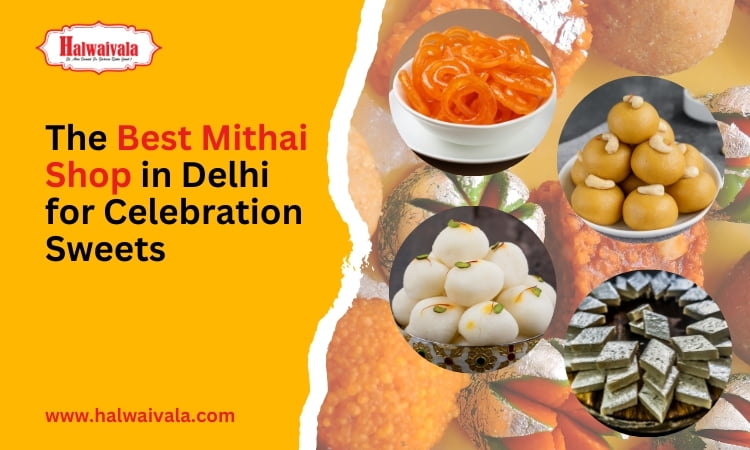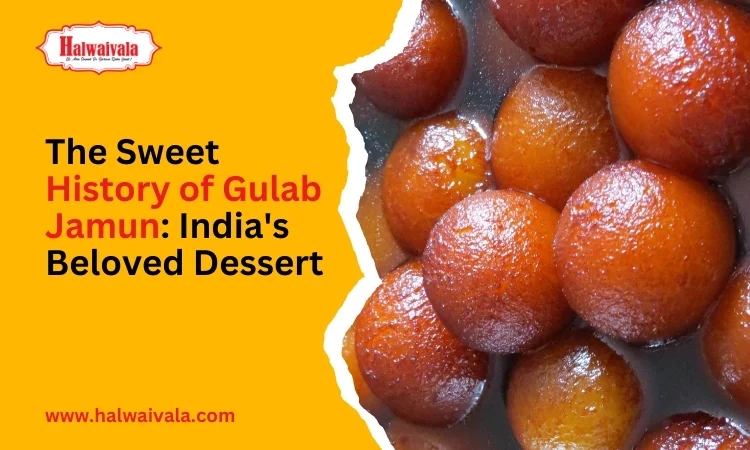
The Sweet History of Gulab Jamun: India’s Beloved Dessert

Gulaab Jamuns are the special dough balls deep-fried and dropped in rose-scented sugar syrup. And you are right: Gulab Jamun is a very significant Indian sweet dish. Gulab Jamun literally means “rose water berry” in English. It is coated with a golden brown outer cover, while the inside is soft, very spongey, and mainly rosewater and cardamom-flavored. Some make smooth, useful dough using khoya, it has less milk with less flour. Ball-shaped dough deep-fries them dark. They are dipped in a hot, aromatic syrup.
The Lukewarm Gulab Jamun bursts as a sensory overload. It’s the perfect dessert at the end of every celebration. The centerpiece flows down your tongue, cold with the sweet flower syrup at the centre, while it’s firm from the top. Cardamom and rosewater give it a distinct taste. This food is delicious. The abundance and sweetness of Gulab Jamun are still loved by Indians. This toffee rocks at weddings, holidays, and family get-togethers. If you visit the Best mithai shop in Delhi then you have the best experience of this dessert item.
Origins and Etymology
Although most evidence points towards Persian cuisine, its origin is unknown because of its long history. The Persian and Arabic dishes Luqmat al-Qadi and Zulbia resemble Gulab Jamun. They resemble sweet-sauced, deep-fried dough balls. As expected, the name reflects Persian influence. “Gulab” comes from the Persian “gol,” meaning flower, and “ab,” meaning water. Rosy syrup is the name. The Hindi word “Jamun” means a sweet-looking black plum.
The recipe may have arrived in India under Mughal rule. Tailored to local tastes and ingredients, it became one of the staples of India. Much to the delight of this treat, the changes did retain its core ingredients and preparation.
Historical Development
Gulab Jamun arrived in India with the Mughals during the 16th century. Famously, the Mughals had elaborate feasts, so the chefs quite possibly tailored the Persian dish according to Indian taste buds. Milk-based khoya with Indian spices such as cardamom and saffron may have substituted bread. Recipes were changed to suit local tastes and products.
Every version used to give that famous dessert an all-new feeling. Some places enrich syrup with saffron or nuts. Saying Gulab Jamun to that would translate to a deep-fried dough ball dripping in a sweet sauce. Because of its great longevity and magnificent taste, Indians consume sweets during festivals.
Traditional Preparation

It’s all in how carefully and simply you cook your gulab jamun. First, there’s business with the khoya—made by gradually simmering whole milk until the milk solids separate. Next, add a little flour and optional baking powder to lighten this thick, milk-solid base. Make dough balls, fry in ghee till golden, and then let them swim in fragrant rose water-cardamom syrup.
It needs to have the right amount of soft, mushy inside and crisp, caramelised outside. The dough balls have to be fried at the right temperature so that they don’t end up thick or crispy. The warm, fragrant sauce hits a good texture in the fry. This Indian dessert delicacy is made by gently boiling milk, then adding sugar.
Regional Variations

Gulab Jamun found regional differences while travelling in India. The shape is round in the north. It tends to be more oval in the south. Bengali “Kala Jamun,” because of cow milk khoya and rose flavour, is darker. Based on its commodities and tastes, each area has its flavour.
Some add saffron or citrus, while others add peanuts or walnuts for crunch. Maharashtra’s “Dry Gulab Jamun” is sans syrup. That gives it more thickness and chewiness. Rajasthani syrup is tangier with lemon juice. All these regional variations underline Gulab Jamun’s adaptability and India’s diverse cuisine. That is why this dinner reaches every corner of the country.
Cultural Significance
Apart from being the epitome of tastebud satisfaction, Gulab Jamun is culturally important in India. It is the traditional Diwali, Holi, and Eid gifting associated with joy and sweetness; it uplifts weddings, birthdays, and other celebrations to a different plane.
Gulab Jamun infuses the spirit of love, compassion, and togetherness in oneself. It is that one family joy that everybody looks out for the most. The way to prepare and serve it is almost always passed on. Indian homes boast a rich legacy of food. The gulab jamun denotes more pleasure and social value than it tastes. It unites people and makes memoirs of a super feast or any family reunion.
Global Popularity
This global popularity for Gulab Jamun does not end here in India. Indians carried their love for this yummy dish all over the world. Gulab Jamun is enjoyed in Pakistan, Bangladesh, by Indians, and in the UK.
This delicious delicacy is available in Indian restaurants and foreign stores. It is world-renowned for its unique flavour, which attracts people all around the globe. Gulab Jamun is the epitome of Mumbai-to-London Indian food. It pleases all tastes because of its syrup-soaked texture, which smells of sweetness. Gulab Jamun represents that food unites diversified civilizations. Ending it brings the taste of India to the global table.
Modern Innovations
Food evolves, even Gulab Jamun. Modern chefs play with flavours and presentation. Some add chocolate or fruit to the dough to spike an everyday dinner. Other plates throw together unrelated foods with ice cream, whipped cream, and exotic fruit compotes.
New confections with Gulab Jamun essence combine foreign and local ingredients. Gulab Jamun cheesecakes, cupcakes, and donuts are trendy and merge this sweet dessert with various cuisines. Because of his willingness to experiment, it is sure that Gulab Jamun will delight future sweet tooth fans. With creative twists, Gulab Jamun has become a much-loved dessert that brings together tradition and technology. Its classic charm appeals to both traditional and daring eaters.
Nutritional Aspects
Keep in mind that Gulab Jamun is dense in calories and sugar. The dessert, hence, has to be taken in small amounts. Some add milk powder or low-sugar syrups. Most significantly, Gulab Jamun must be taken in limited quantities as part of a balanced diet and relished for its elusive flavour.
It was in India that the Persian sweet dessert of Gulab Jamun came into the mainstream due to the ease with which it could be transformed into various varieties. Fun, reminiscent of culture, an opportunity to share your food—it’s exciting in every bite because of age-old traditions and new twists. So the next time you eat a Gulab Jamun, remember its almost endlessly long history, the different flavours of places, and the spirit of creativity that keeps it fresh in the sweets industry. You’ll love its flavour. Salute the culture in Gulab Jamun.
Conclusion
Finally, Gulab Jamun explains the way small pleasures last. From Persian roots, it has been the favourite of hearts and taste buds, going to its revered standing in Indian culture through millennia. Regional variations show how a basic formula can be flexible, while new technologies extend it. Be it warm and dripping in syrup or otherwise made, Gulab Jamun is a festive pleasure and a part of India’s rich culinary heritage.
This heavenly delicacy can be tasted only at Halwaivala, the Best sweets in Naraina Delhi. Halwaivala’s Gulab Jamuns use fresh ingredients blended with traditional processes. Light and fluffy bread and light, delicious sauce will want you for more with each bite. Enjoy India’s delicious heritage, either in Delhi or around a Halwaivala store. Their Gulab Jamuns have been mentioned all over the country.
Recent posts


The Health-Conscious Foodie’s Guide to Famous Veg Bakeries in Delhi

Tips to Find the Best Gift Hampers for Your Loved Ones

